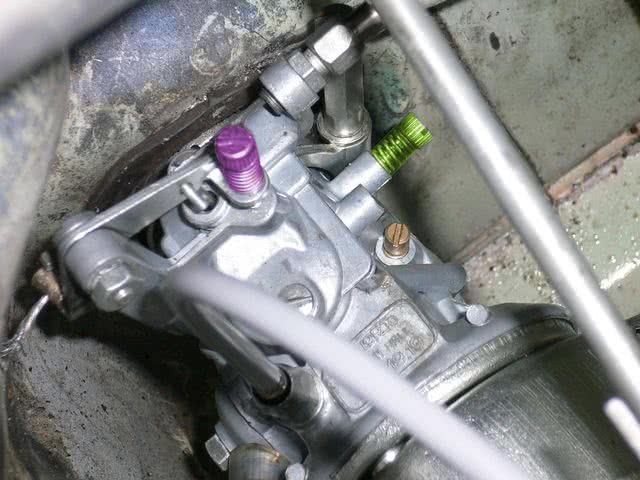Adjusting the Vespa Carburettor
The basis for this workshop is a carefully cleaned carburetor and a new gasket set. This workshop deals with the individual adjustment of your carburetor as a specialized workshop would do. This guide covers the adjustment of SHB carburetors for the following Vespa PK S-XL2 and Vespa 50 models:
- 16.10 / 16.16 for the V50
- 16.16F for the PK 50 S
- 16.12F for the PK HP4
- 16.15F for the PK 50 XL
- 19.19 SHB for the PV 125
- 19.19 SHBC for the PK 80-125
- 20.20 for the PK 125 XL2 / ETS
For the PHB series and the Si carburetors of the Vespa PX scooters, the steps mentioned also apply. The mixture screw on these carburetors, like on the SHB carburetor, is positioned behind the throttle slide and has the same effect when turned.
Adjusting the Cable
The cable should be adjusted to have a slight play. This is done using the cable holder hollow screw through which the cable is guided.
Important: this adjustment is only about the cable play, not the throttle slide position or the idle.
Adjusting the Part-Load Range
By making a basic adjustment, a good starting point for adjusting the part-load range can be created. The Vespa should be on a level surface without incline.
The mixture adjustment screw (marked in green in the picture) is located on the side of both the V50 and PK 50 S/XL (on the Si carburetor, it's on the back). To achieve the basic setting, turn the mixture screw all the way in, then turn it out exactly 1.5 turns. This sets the factory default setting.

On PK 50 XL carburetors, there is a so-called wing nut on the head of the mixture screw. It serves to more accurately track the number of turns of the mixture screw.
Because every engine is different, each engine should be adjusted individually. Classic Vespa engines often have many kilometers, revisions, and modifications behind them. An individual and professional adjustment is then all the more important.
To do this, with the engine running, slowly turn in the mixture screw. Both the rpm and the sound should change. Expect the rpm to increase the further you turn in the mixture screw. It's important to find the range where the rpm begins to drop again. In this range, turn the mixture screw back out an eighth of a turn. That's it!
To prevent the engine from stalling during adjustment, the idle speed of the carburetor can be adjusted at any time with the purple marked throttle stop screw by turning it in to increase and turning it out to decrease.
Notes on the Si Carburetor
The Si carburetor of the Vespa PX, Sprint, Cosa, etc. behaves identically, but some parts are in different positions.
The play of the cable is adjusted at the front of the carburetor box.
Instead of the throttle stop screw, the Si carburetor has an idle screw with a spring, which protrudes a bit upwards from the air filter.
The mixture screw is located on the back.
Conclusion
If the engine does not respond as expected to the mixture screw, or if the highest rpm is only reached with the mixture screw turned very far out, there may be several reasons. To keep this workshop within its scope, only a hint at a possibly inappropriate idle jet is given here (the brass-colored jet below the green marked mixture screw in the picture). In this case, carburetor cleaning and jetting are required.
The idle jet is screwed in until it stops. It is available in various sizes. However, it is not adjustable.
